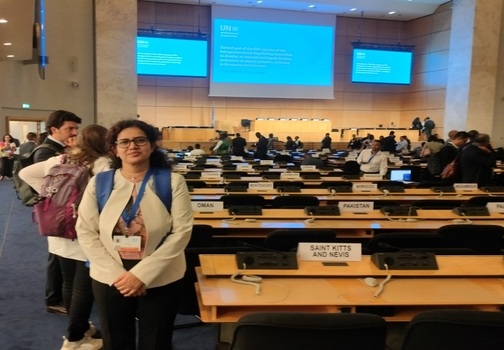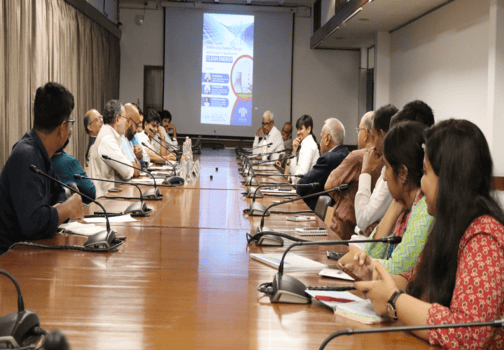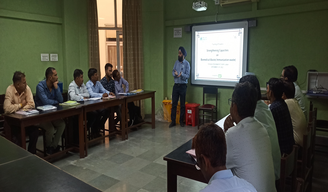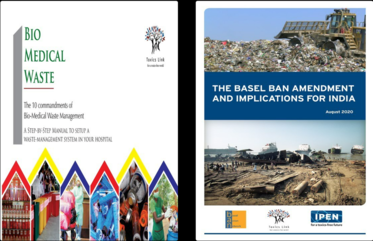INCREASE IN PRESENCE OF ARSENIC AND FLUORIDE IN GROUNDWATER
GOVERNMENT OF INDIA
MINISTRY OF JAL SHAKTI
DEPARTMENT OF WATER RESOURCES, RIVER DEVELOPMENT & GANGA REJUVENATION
RAJYA SABHA
UNSTARRED QUESTION NO. 233
ANSWERED ON 05.02.2024
INCREASE IN PRESENCE OF ARSENIC AND FLUORIDE IN GROUNDWATER
233. DR. C.M. RAMESH
Will the Minister of JAL SHAKTI be pleased to state:
(a) whether there is an increase in arsenic and fluoride contamination in ground water in some parts of NCT of Delhi and in some States affecting large number of population, if so, the details thereof;
(b) whether Government proposes to constitute a high level committee to examine increase in arsenic and fluoride contamination of ground water in the country and measures suggested to contain it, if so, the details thereof and if not, the reasons therefor; and
(c) whether in the past, any such exercise was undertaken in this regard and details thereof?
ANSWER
THE MINISTER OF STATE FOR JAL SHAKTI
(SHRI BISHWESWAR TUDU)
(a) Central Ground Water Board (CGWB) conducts ground water quality monitoring on a regular basis throughout the country including NCT Delhi and also generates ground water quality data on a regional scale during various scientific studies. The details of Arsenic and Fluoride in ground water of NCT Delhi from 2017 to 2022 are given in Annexure -I. Further, as per the available information, arsenic has been reported in isolated parts of 230 districts of 25 States beyond the permissible limit and Fluoride has been reported in isolated parts of 469 districts in 27 States. The list of partially affected states is given in Annexure-II. The studies conducted so far indicate that, both Fluoride and Arsenic in groundwater are mostly geogenic in nature, which means these constituents are already in the rock or soil matrix.
(b) Water is a state subject and the responsibility of ground water management, including taking initiatives for improving ground water quality and mitigate the contamination issue, lies primarily with the state governments. In addition to this several steps have been taken by the Central Government in this direction. Some of the important ones are mentioned below:-
i. Central Ground Water Board (CGWB) has entered into an MoU with Geological Survey of India (GSI) in 2022 for the study of Uranium, Lead, Arsenic, Fluoride and Mercury contamination of
groundwater in parts of Punjab, Haryana, Andhra Pradesh, Uttar Pradesh, Bihar, Chhattisgarh,Jharkhand and Assam States.
ii. Government of India, in partnership with States, is implementing Jal Jeevan Mission (JJM) since August, 2019 to provide potable tap water supply of prescribed quality and on regular & long-term
basis to every rural household in the country. Under JJM, while planning water supply schemes to provide tap water supply to house-holds, priority is given to quality-affected habitations. While
allocating the funds to States/ UTs in a particular financial year, 10% weightage is given to the population residing in habitations affected by chemical contaminants. Since, planning,implementation and commissioning of piped water supply schemes based on a safe water source may take time, purely as an interim measure, States/ UTs have been advised to install community water purification plants (CWPPs) in such habitations, to provide potable water to every household at the rate of 8–10 litre per capita per day (lpcd) to meet their drinking and cooking requirements.
iii. CGWB is successfully constructing Arsenic free wells in arsenic affected areas using the cement sealing technology for tapping contamination free aquifers and also providing technical assistance
to state departments in Fluoride mitigation.
iv. Further, the quality of groundwater can be improved to some extent if concerted efforts are made to improve the groundwater resources through appropriate groundwater recharge/rainwater harvesting. The Ministry of Jal Shakti has taken up several important measures in this direction like launching
of Jal Shakti Abhiyan which focuses on saving and conserving rainwater with peoples’ participation, preparation for Master plan, a macro level plan indicating various structures for the different terrain conditions of the country for Artificial Recharge, regulation of ground water extraction, implementing Atal BhujalYojana with the theme of participatory ground water management etc.
(c) An Inter-Ministerial Group(IMG) on ‘Arsenic Mitigation’ was constituted in the year 2014 under the Chairmanship of Mission Director, National Water Mission. IMG regularly monitored the action plans of all concerned agencies for Arsenic mitigation and gave directions on further course of action.






